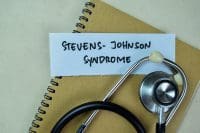Rex Moyer, age 27, comes to the emergency department (ED) complaining of severe, colicky pain in his right flank, which he rates as 10 on a 1-to-10 scale. He reports a history of chronic back pain (for which he has been taking opioids for the past 2 years) and renal lithiasis. He had a renal lithaisis episode 1 week ago.
When a work-up confirms he has a new renal calculus, he receives the standard treatment of I.V. fluids, analgesia, and antiemetics. The physician prescribes the opioid hydromorphone, 2 to 4 mg I.V., every 3 hours as needed. When the nurse questions this high dosage, she’s told it’s acceptable because the patient is probably opioid-tolerant. From Rex’s 5 p.m. arrival at the ED until his 11 p.m. admission to the med-surg unit, he receives a total of 8 mg hydromorphone.
History and assessment hints
In the med-surg unit, Rex complains of severe pain throughout the night. Per admitting orders, you give him an additional 8 mg hydromorphone. When evaluating him at 5 a.m., 3 hours after his last dose, you note his respirations are shallow and his respiratory rate is 16 breaths/minute. He is snoring and can be aroused only to noxious stimuli. When awake, he rates his pain at 8.
Knowing sedation precedes respiratory depression, you assess his sedation level using a sedation scale; it’s 3—the point at which further opioid use should be reduced or the opioid replaced with another analgesic class and the patient should be monitored. So instead of giving Rex additional hydromorphone doses, you administer ketorolac by slow I.V. and apply a pulse oximeter. You continue to observe him closely because of his high risk of respiratory depression.
On the scene
A short time later, his pulse oximetry reading is 86% on room air, his shallow respirations have slowed to 7 breaths/minute, and he barely arouses to pain. When you reevaluate his sedation level, it’s 4—the level at which clinicians should consider administering naloxone (Narcan) to reverse opioid effects. Per protocol, you apply supplemental oxygen and administer bag-valve-mask respirations while a colleague obtains naloxone. You give a titrated dose of naloxone 0.4 mg I.V. every 1 to 3 minutes to prevent overt opioid withdrawal syndrome.
Aware that naloxone’s half-life is only about 1 hour, you monitor Rex carefully. You’re also aware that the naloxone dose may need to be repeated or given by I.V. infusion to prevent a rebound effect.
Outcome
For the next 2 hours, Rex’s pain is controlled with ketorolac. His respirations increase to 14 breaths/minute with adequate depth; his pulse oximetry reading exceeds 97%. The physician adjusts dosing for future opioids to 1 to 2 mg every 2 to 4 hours.
The next morning, Rex passes the renal calculus. He is discharged with instructions to drink plenty of fluids, strain all urine, take a prophylactic antibiotic as prescribed, and see his primary-care physician for follow-up. Thanks to your frequent and thorough monitoring of his sedation level, he was able to avoid serious harm.
Education and follow-up
Respiratory depression is more likely when opioid therapy begins, when the dosage is raised significantly, when the opioid is given with an antiemetic (because of the cumulative sedative effect), and when the patient’s pain eases (because pain has a stimulant effect). It’s a particular concern with hydromorphone, which is eight to ten times more potent than morphine and has a faster onset. The drug can cause sedation even in small doses; the risk rises progressively with larger doses. Also, it accumulates in the body with repeated dosing, so even small doses can have an unpredictable effect. Currently the recommended dosing for hydromorphone is 0.3-2 mg I.V. every 4-6 hours depending on the patient’s response. The American Pain Society recommends a starting dosage of 1.5 mg I.V. for severe pain.
Polly Gerber Zimmermann is Associate Professor of Nursing at Truman College in Chicago, Illinois.

















